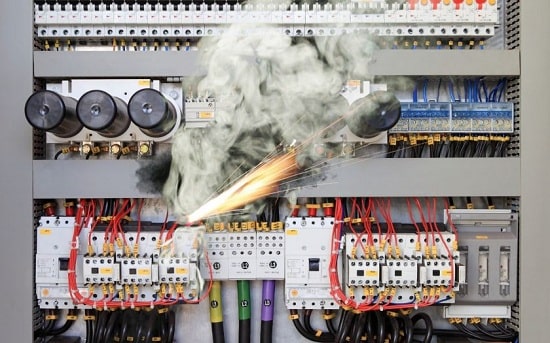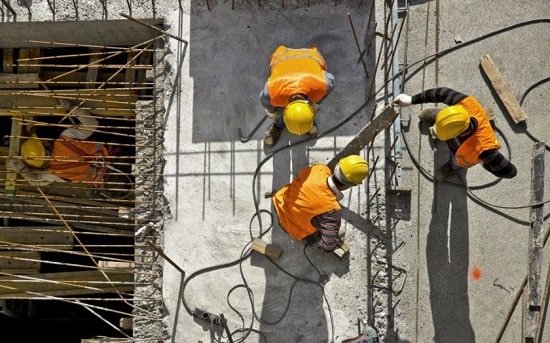Construction projects in the Middle East and Africa are rapidly on the rise, as there is significant commercial investment in the region. As development increases, care should be taken to ensure that effective product testing is undertaken, especially in relation to cable products.
Cable products in the region are required to operate in challenging conditions, enduring harsh sunlight, high temperatures and strong winds. These conditions may increase the likelihood of fire, which is a key concern for those responsible for developing regulations. Many of these construction projects take place in locations with limited land area available, which leaves contractors with no choice but to build upwards, adding to the cost of development and requiring more technical construction techniques and better-quality materials.
As much of the infrastructure is relatively new, architects often specify the building materials used must meet the standards they are familiar with; including their local or the widely recognised British, European or international standards. In many cases, specifiers will state that all installed product must also be certified or approved to these standards in order to evidence their quality. An easy way to verify quality is through product certification provided by an independent accredited testing facility.
Knowledge of proven quality standards and their application is an approach to specification which has led to a wide spread of standardisation throughout the region. There is, however, concern that those specifying the products may not be familiar with the real importance of why approved products must be used, and therefore their full benefit may not have yet been realised.
Cable quality is sometimes given less thought than other, more visible, construction materials or components that are used in the design and construction of a building. This can result in low quality cable product being installed, as it is considered last when much of the project budget has already been spent. Poor quality or unsafe product comes with a danger, putting the people who live or work in the building at greater risk, if something were to go wrong. Many specifiers believe cable will be fit for purpose provided it meets the functional requirements of the specification. As offices, buildings and homes are full of cables, failing to source product that have been independently verified, to prove that the product is what is claims to be, could be a grave mistake.

Why do we need cable?
Cables may be visible or invisible, buried in trucking, walls or other hidden void spaces, taking the form of power cables, optical fibre cables or copper communication cables in many sizes and shapes. If cables are faulty or damaged, equipment and machinery will not function as it was designed to, resulting in an inability to complete essential tasks and increasing the potential risks that a failed electrical product poses to end users.
Most cables are designed and constructed using materials that are suitable for a specific application, for example: a fire alarm cable needs to be fire resistant. If an unsuitable cable was specified for installation with fire alarms, in the event of a fire the unfit product would burn and degrade. The resultant damage to the cable could mean that the alarm would fail to alert the building occupants to the fire risk, ultimately meaning a higher potential chance for loss of life. In the same way, cables that are laid underground or outdoors will have different requirements to those specified for use inside buildings. For example, outdoor cables require additional braiding or water-resistant sheath linings and UV rating to avoid degradation of the outer sheathing. Simply specifying a cable that meets a recognised standard does not guarantee it will be suitable for the project or application. It is encouraged therefore, to identify your requirements so that the right cable product and standards can be applied to meet the application criteria at the start of the specification process.
Types of cable testing
Fire testing demonstrates what happens when a cable sets alight and confirms whether it is capable of functioning during a fire. When cables burn, they may produce significant volumes of heat, smoke, toxic or corrosive fumes and falling flaming materials (known as burning droplets). The volume and spread of these emissions can be critical to the further escalation of a fire scenario. The heat can cause items surrounding the source to ignite, while the smoke and corrosive gas can incapacitate those within the vicinity, impairing their senses, making evacuation difficult to undertake. As cables are routed around a building, this can create a path that makes it easy for fire to spread quickly. Alongside the risks to life, some long term affects to sensitive electrical equipment can also be encountered.
While fire testing of cables is extremely important, a comprehensive testing regime should be adopted to validate overall performance. Testing is essential to ensure cables are fit for-purpose, will perform in challenging conditions and will not fault electrically, mechanically or otherwise which may spark and lead to fire. Completing a range of tests provides a more robust and accurate indication of how a cable will perform during normal use as well as in emergencies. All cables should be tested for a wide range of characteristics to ensure they meet quality and safety standards, and relevant regulatory requirements.

Which other properties are important?
The below introductions will give you an insight into why testing additional performance characteristics, beyond fire testing, should give you confidence in your selected cable products.
Electrical testing assesses the performance of insulation, conductors and cable armour through the application of voltage and use of specialist laboratory equipment. High voltage and insulation resistance tests are most frequently called up in standards, as these are designed to detect defects and ensure insulation quality is consistent across all cables. Conductor resistance testing is also essential as this assesses the amount and quality of the conductor material within the cable, ensuring that it will successfully carry the current it was designed to.
Mechanical testing assesses how well cables will perform in the environmental conditions it may have been specified for. Flexing tests assess the operation of cable when subjected to regular movement and torsion throughout their lifespan, while abrasion, shrinkage and tensile strength tests are frequently called up by standards as conductors can be exposed during cable operation, which can pose a safety risk and danger. In the same way, cold impact tests are conducted to check that cable can withstand bending and impact at low temperatures during installation and normal use.
Material testing assesses the durability and longevity of sheathing and insulation, by exposing cables to high temperatures over a sustained period. Tests range from one hour to over six months in duration and simulate service conditions to understand the typical lifespan these cables are expected to exhibit. Hot set tests are used to check a suitable level of cross-linking is present within various insulation and sheathing materials, while hot pressure tests check that materials are suitably resistant to indentation at elevated temperatures.
Chemical testing assesses how cable conductors and insulation react to exposure to chemicals. Other tests check for corrosive and acid gas, pH and conductivity, and the presence of halogens, which may also form part of effluent testing when burning. They also assess oil and grease resistance as exposure to these substances can cause insulation to degrade and crack. Common chemical tests also include the measurement of tin coating applied to conductors and the weight of zinc coating which is applied to armour wires. Checking these properties ensures that a suitable quantity of each material has been applied in the production of the cable.
Fire testing is important because it assesses how well cables perform in the event of a fire. Single flame testing is the minimum performance requirement called up in standards, and the purpose of this test is to measure flame spread characteristics of both materials and cable construction. A vertical ladder test works in the same way but on a larger scale and applies to multiple cable lengths. Circuit integrity tests check that cables will continue to operate sufficiently well during a fire to supply power to emergency apparatus, while smoke emission tests measure the density of smoke produced.
Each of these testing criteria assess specific characteristics of cable performance and help to provide a more robust view of quality and safety. While cables may be appropriate in terms of their fire performance, this does not guarantee they will perform effectively when exposed to extreme temperatures or power surges. It is therefore critical that a range of characteristics are known and quantified for the end user to specify correctly the right product for any given application.
Cable testing and building regulations
Cable performance should be integral to the tendering process for any building contractor and is often included within codes of practice and local, National and International regulatory requirements. While requirements vary between regions, the main objective is usually to ensure the health and safety of those who will be inhabiting the buildings. With new building codes having recently been published in Ghana1 and Nigeria2, building regulations continue to evolve around the world.
Whether a country has existing building regulations, or an organisation is seeking the additional peace of mind that independent testing provides, comprehensive testing of building components is recommended. Partnering with BASEC to help you deliver your commitment to quality and safety is your choice. The Construction Products Regulation (CPR), for example, has required since July 2017 that all cables sold into Europe intended for permanent installation in a building or civil engineering work are CE marked, to validate compliance to the fire performance requirements of EN 50575. The CPR awards a fire classification based upon how well cables have performed through a range of fire tests EN 50399, EN 60332-1-2, EN 61034-2 and EN 60754-2, with ratings ranging from classes Aca (the highest) to Fca (the lowest).
As cables are safety critical items, quality and safety should be at the forefront of your mind when specifying and selecting the right cable for application. Cable must be fit for purpose and manufacturers not only have a responsibility to themselves but also to the end user that the cable they manufacture will function as designed and has been independently approved and verified. Cables can be simple or complex and minor changes to the design, material inventory or manufacturing process can significantly affect their properties, potentially causing them to no longer function as expected, either in normal use or extreme conditions, which can have a serious impact on life and property. Failure of systems can have tragic consequences as the recent fires at The Address Tower in Dubai and Grenfell Tower in London have demonstrated.
BASEC is the preferred testing and certification partner to the worldwide cable industry. The mark of independently approved quality and safety is only awarded when cable products have been rigorously tested to meet the highest industry recognised standards. The BASEC name is synonymous with quality and safety and our independent cable certification and testing is trusted and respected around the world. For over 45 years BASEC has been a mark of reassurance for those manufacturing, specifying and installing cable. Our comprehensive product testing approvals, stockists and control cable certification schemes provide purchasers and contractors with the peace of mind that the cable they install is compliant, safe, fit for purpose and will provide years of reliable service. To discuss your requirements, contact the team now.






























